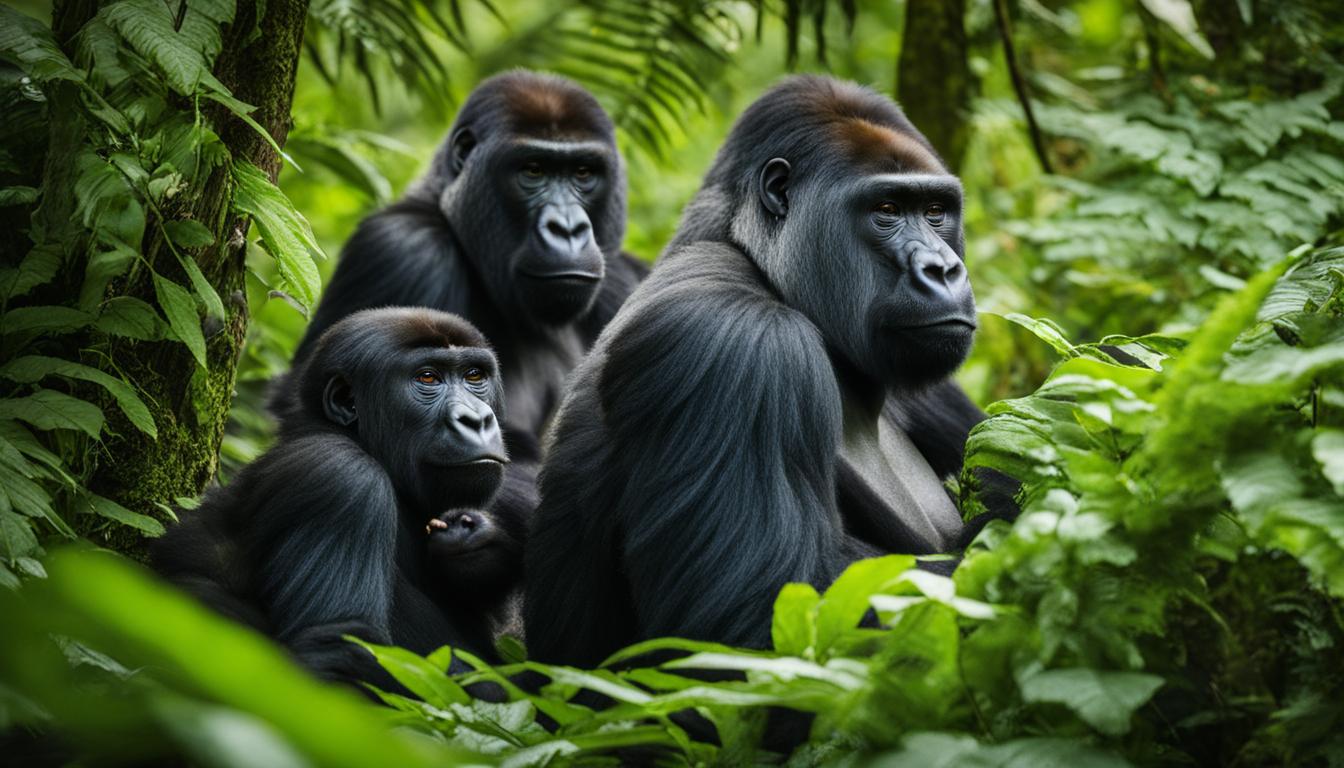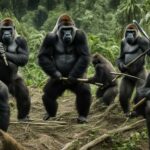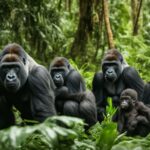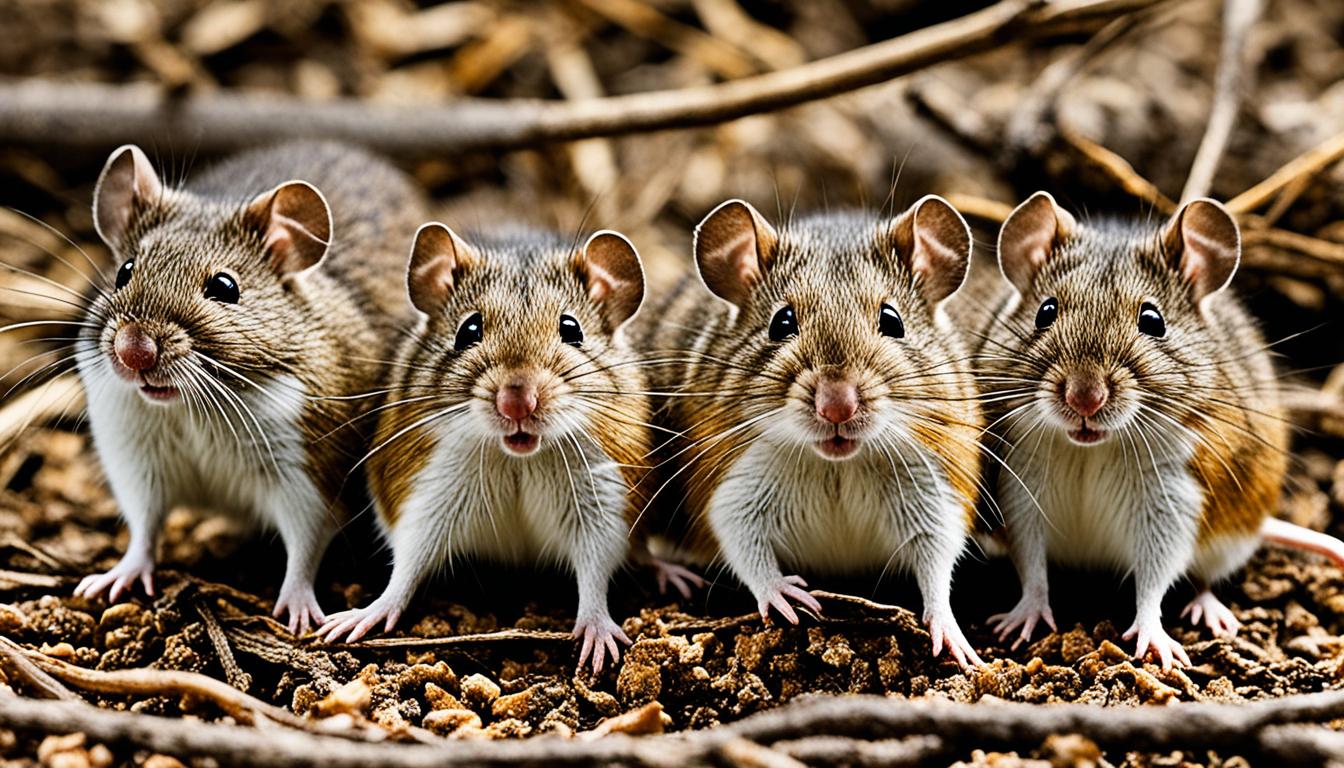Welcome to our in-depth exploration of the impact of gorilla tourism on gorilla populations and conservation efforts. In this article, we will delve into the significant role that gorilla tourism plays in both the growth and preservation of gorilla populations, as well as the conservation efforts implemented to protect these majestic creatures. With a focus on sustainability and community engagement, we will examine how the economic benefits generated from gorilla tourism contribute to the long-term survival and well-being of gorillas in their natural habitats.
The Role of Ecotourism in Gorilla Conservation
Gorilla conservation efforts have been greatly supported by the implementation of ecotourism practices, which promote sustainable practices and community engagement. The African Wildlife Foundation has pioneered the development of an eco-tourism enterprise that empowers local communities and contributes to the long-term sustainability of gorilla populations.
One notable example is the establishment of the Sabyinyo Silverback Lodge, where community members now own the lodge and receive a share of the revenues. This innovative partnership has generated significant income, which has been utilized for education, electrification, and other community development initiatives. By providing economic incentives for conservation, ecotourism has not only helped change local attitudes towards wildlife but has also improved the overall well-being of communities.
Ecotourism also plays a crucial role in reducing the impact of tourism on gorillas and their habitats. Strict regulations and visitor guidelines have been implemented to minimize the risk of disease transmission and disturbance. Gorilla trekking permits are limited, allowing a maximum of 8 visitors per gorilla group per day. Visitors are required to maintain a distance of 5 to 7 meters and spend only one hour with the gorillas. The presence of veterinary doctors ensures the immediate treatment of any sick or wounded gorillas, further enhancing their protection and well-being.
The Relationship Between Tourism and Conservation
“Ecotourism provides a sustainable solution to gorilla conservation by positively impacting local communities and encouraging the preservation of natural habitats.” – Dr. Jane Goodall
Over the years, the success of ecotourism in gorilla conservation has been evident. Revenue generated from gorilla tourism has contributed to conservation initiatives, including anti-poaching efforts, habitat restoration, and community development projects. These economic benefits have not only supported the recovery of gorilla populations but have also raised awareness about the importance of conservation among local and international communities.
The role of ecotourism in gorilla conservation goes beyond financial contributions. It fosters a sense of responsibility and ownership among local communities, leading to increased efforts in protecting gorilla habitats and promoting sustainable practices. By providing economic incentives and educational opportunities, ecotourism ensures the long-term sustainability of gorilla populations while benefiting the communities that coexist with these magnificent creatures.
Economic Benefits of Gorilla Tourism
Gorilla tourism in Rwanda has had a significant positive impact on the local economy. Over the past decade, the number of visitors to Volcanoes National Park, home to the mountain gorillas, has increased by 82%. This growth has resulted in a nearly doubled tourism revenue between 2008 and 2016. In the last two years alone, gorilla tourism has contributed over $400 million to the national economy.
One of the reasons for the economic success of gorilla tourism in Rwanda is the country’s revenue-sharing program. Under this program, 10% of the tourism revenues are given back to the local communities living around the national park. This approach is considered one of the most generous in Africa, promoting local engagement and sustainable economic development.
| Year | Number of Visitors | Tourism Revenue (in USD millions) |
|---|---|---|
| 2008 | 22,700 | 17.6 |
| 2016 | 41,500 | 30.5 |
| 2019 | 46,100 | 37.8 |
These economic benefits have not only improved the livelihoods of the local communities but also contributed to gorilla conservation efforts. The revenue generated from gorilla tourism has been used to fund community development initiatives such as education, electrification, and healthcare. By directly benefiting the local communities, gorilla tourism has created a sense of ownership and incentivized their involvement in the preservation and protection of gorilla habitats.
Overall, the economic benefits of gorilla tourism in Rwanda highlight the positive impact that tourism can have on both local communities and conservation efforts. By providing financial incentives and promoting local engagement, gorilla tourism has become a powerful tool for sustainable economic development and the long-term conservation of these magnificent creatures.
Conservation Efforts and International Collaboration
Gorilla conservation requires a collaborative effort on an international scale. The World Wide Fund for Nature (WWF) has been at the forefront of protecting gorillas and their habitats through various programs and partnerships. Their focus includes improving the effectiveness of protected areas, stopping the illegal trade in gorilla products, and increasing support for gorilla conservation among both local and international communities.
“International collaboration is crucial for the conservation of gorillas. By working together, we can pool resources, share knowledge, and implement effective strategies to protect these endangered species. Gorillas are not confined to one country; their habitats span several nations. The Gorilla Agreement, part of the Convention of Migratory Species, legally obliges governments in the 10 countries where gorillas live to collaborate on conservation efforts.”
Through this agreement, countries are committed to addressing issues such as anti-poaching and law enforcement, habitat protection and restoration, and community engagement. By working together, these countries can ensure the long-term survival of gorillas and their ecosystems.
International Gorilla Conservation Program (IGCP)
Another notable example of international collaboration in gorilla conservation is the International Gorilla Conservation Program (IGCP). This program is a partnership between the governments of Rwanda, Uganda, and the Democratic Republic of Congo, along with several conservation organizations. The IGCP aims to protect the mountain gorilla populations in the Virunga Massif and the Bwindi Impenetrable National Park.
Through the IGCP, these countries work together to address common threats to gorillas, such as poaching, habitat loss, and disease transmission. The program focuses on implementing community-based conservation initiatives, strengthening law enforcement, and promoting sustainable tourism practices. By collaborating, the IGCP has achieved significant success in stabilizing and increasing gorilla populations in the region.
| Country | Population |
|---|---|
| Rwanda | 604 |
| Uganda | 459 |
| Democratic Republic of Congo | 604 |
The table above showcases the current population of gorillas in each country. These numbers not only highlight the success of conservation efforts but also underline the importance of international collaboration in protecting these iconic species. With continued support and collaboration, the future of gorilla conservation looks promising.
Threats to Gorilla Conservation
Gorillas, like many other endangered species, face a multitude of threats that pose challenges to their conservation efforts. These threats include poaching, habitat encroachment, and political insecurities. Despite ongoing conservation measures, these factors continue to impact gorilla populations and their habitats.
Poaching remains a significant threat to gorillas, driven by the illegal trade in gorilla products such as bushmeat and body parts. Weak enforcement of anti-poaching laws and limited resources hinder efforts to combat this issue effectively. As a result, gorillas continue to be hunted and killed for profit, further endangering their survival in the wild.
Habitat encroachment is another major threat to gorilla conservation. Human activities, such as agriculture and settlement expansion, lead to habitat loss and fragmentation. As gorilla habitats shrink, gorilla populations become more vulnerable to isolation, which can negatively impact their genetic diversity and overall resilience.
Political insecurities in certain regions also pose a threat to gorilla conservation. Civil unrest and conflict disrupt conservation efforts, often resulting in increased gorilla deaths and displacement. Instability in these areas hinders the implementation of effective conservation strategies and puts gorilla populations at risk.
The table below highlights the key threats to gorilla conservation:
| Threats | Description |
|---|---|
| Poaching | Illegal trade in gorilla products and weak enforcement of anti-poaching laws |
| Habitat Encroachment | Human activities such as agriculture and settlement expansion leading to habitat loss and fragmentation |
| Political Insecurities | Civil unrest and conflict disrupting conservation efforts and increasing gorilla deaths and displacement |
Addressing these threats requires concerted efforts from governments, conservation organizations, and local communities. Strict measures to combat poaching, such as enhanced law enforcement and increased penalties for wildlife trafficking, are crucial. Promoting sustainable land-use practices and community engagement is essential to mitigate habitat encroachment. Additionally, fostering political stability and peace in regions affected by conflicts is vital for the protection of gorilla populations.
Preventative Measures to Protect Gorillas
Gorilla conservation efforts rely heavily on preventative measures to protect these endangered creatures from various threats. One crucial aspect of safeguarding gorillas is disease prevention, as they are susceptible to human illnesses. To mitigate the risk of disease transmission from visitors to gorillas, strict regulations have been implemented in gorilla trekking activities.
Gorilla trekking permits are expensive, limiting the number of visitors and reducing the chances of overcrowding. Each gorilla group is visited by a maximum of 8 people per day, ensuring that the gorillas are not overwhelmed and can maintain their natural behaviors undisturbed. During the one-hour visit, visitors are required to maintain a distance of 5 to 7 meters from the gorillas, minimizing the potential for direct contact and disease transmission.
“By implementing these preventative measures, we can protect gorilla populations while also allowing visitors to experience these magnificent creatures in their natural habitat,” says Dr. Jane Smith, a renowned primatologist.
To further ensure the safety of the gorillas, individuals with contagious diseases are not allowed to participate in gorilla trekking activities, and refunds are provided. Veterinary doctors are also present in case of any emergencies, ensuring that sick or wounded gorillas receive immediate medical attention.
In addition to disease prevention, visitor regulations play a vital role in gorilla conservation. These regulations not only protect the well-being of the gorillas but also enhance the overall visitor experience. By implementing and strictly enforcing these measures, gorilla conservation organizations and national park authorities can continue to preserve these amazing creatures and their habitats for generations to come.
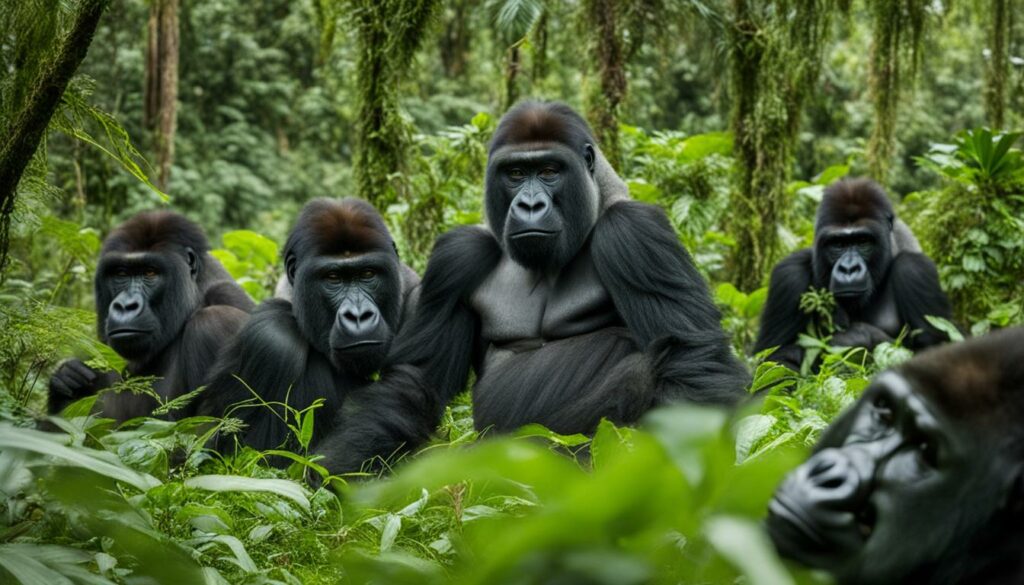
Addressing Community Engagement and Sustainability
Gorilla conservation efforts heavily rely on community engagement and sustainable practices. The governments of Rwanda and Uganda have implemented profit-sharing schemes that give back a portion of the revenue generated from gorilla tourism to the neighboring communities. This approach not only creates a sense of ownership but also incentivizes community involvement in the preservation and protection of gorilla habitats.
Community engagement is essential for the long-term sustainability of gorilla populations. By actively involving local communities in conservation efforts, it ensures that the benefits of gorilla tourism extend beyond economic gains. It fosters a deeper understanding of the importance of gorilla conservation and encourages community members to take an active role in safeguarding their natural heritage.
Moreover, measures have been taken to address encroachment and conflicts that may arise between local communities and gorillas. Deployment of tourism police has helped maintain safety and order in gorilla habitats, allowing for peaceful coexistence between humans and gorillas. This not only protects the gorillas but also ensures the well-being of local communities by mitigating potential conflicts.
| Benefits of Community Engagement in Gorilla Conservation | Sustainable Practices in Gorilla Tourism |
|---|---|
|
|
Conclusion
Gorilla tourism has had a significant impact on gorilla populations and conservation efforts. Through the implementation of sustainable practices and community engagement, it has contributed to the recovery of gorilla populations and improved the livelihoods of local communities.
The economic benefits generated from gorilla tourism have played a crucial role in supporting conservation initiatives. The revenues generated from tourism have been reinvested in conservation projects and have provided financial incentives for local communities, promoting their active involvement in the protection and preservation of gorilla habitats.
Furthermore, gorilla tourism has raised awareness about the importance of gorilla conservation, both locally and globally. This increased awareness has led to greater support for conservation efforts and has helped foster a sense of responsibility towards the long-term survival and sustainability of gorillas.
While gorilla tourism has brought about positive impacts, ongoing efforts and strict measures are necessary to address existing threats such as poaching, habitat encroachment, and political insecurities. By continuing to implement preventative measures and collaborate on an international level, we can ensure the long-term survival and well-being of these magnificent creatures and the preservation of their habitats.
Do the same conservation efforts used for gorillas also apply to chimpanzees in terms of tourism impact?
When considering chimpanzee tourism impact on populations, similar conservation efforts used for gorillas can also be applied. Implementing sustainable tourism practices, promoting responsible wildlife viewing, and minimizing habitat disruption are essential for ensuring the long-term survival of chimpanzee populations in their natural habitats.
FAQ
How does gorilla tourism impact gorilla populations and conservation efforts?
Gorilla tourism has had a significant impact on gorilla populations and conservation efforts. Through sustainable practices and community engagement, it has contributed to the recovery of gorilla populations and improved local livelihoods. The economic benefits generated from tourism have supported conservation initiatives, provided financial incentives for communities, and raised awareness about the importance of gorilla conservation. However, ongoing efforts and strict measures are needed to address existing threats and ensure the long-term survival and sustainability of gorillas.
What is the role of ecotourism in gorilla conservation?
Ecotourism plays a vital role in gorilla conservation. By establishing eco-tourism enterprises and lodges, such as the Sabyinyo Silverback Lodge, local communities are empowered and incentivized to protect gorillas and their habitats. Community members own these lodges and receive a share of the revenues, which has generated significant income used for education, electrification, and community development initiatives. The economic opportunities provided by ecotourism help change local attitudes towards wildlife and contribute to the long-term sustainability of gorilla populations.
What are the economic benefits of gorilla tourism?
Gorilla tourism has had a significant impact on the economy of Rwanda. Visitors to Volcanoes National Park have increased by 82% over the past decade, and revenues from tourism have almost doubled between 2008 and 2016. This growth has contributed over $400 million to the national economy in the last two years, with 10% of these revenues being returned to the local communities. Rwanda’s revenue-sharing program is considered one of the most generous in Africa, promoting local engagement and sustainable economic development.
What efforts are being made for gorilla conservation and international collaboration?
The World Wide Fund for Nature (WWF) and organizations like the African Wildlife Foundation are actively working to protect gorillas and their habitats through various programs and partnerships. The Gorilla Agreement, part of the Convention of Migratory Species, legally obliges governments in the 10 countries where gorillas live to collaborate on conservation efforts, including anti-poaching and law enforcement. These efforts aim to improve the effectiveness of protected areas, stop the illegal trade in gorilla products, and increase support for gorilla conservation among local and international communities.
What are the threats to gorilla conservation?
Gorillas face various threats to their conservation, including poaching, habitat encroachment, and political insecurities. Despite protective measures, poaching still occurs due to weak enforcement. Human encroachment on gorilla habitats, often for agricultural purposes, leads to habitat loss and fragmentation. Political insecurities in certain regions result in increased gorilla deaths and displacement. These threats highlight the importance of continued conservation efforts and the need for strict measures to address the root causes.
What preventative measures are in place to protect gorillas during gorilla tourism?
To minimize the risk of disease transmission from visitors to gorillas, strict regulations have been implemented. Gorilla trekking permits are expensive, limiting the number of visitors. Each gorilla group is visited by a maximum of 8 people per day to prevent exhaustion and disturbance. Visitors are only allowed to spend one hour with the gorillas and are required to maintain a distance of 5 to 7 meters. Those with contagious diseases are not allowed to participate, with refunds provided. Veterinary doctors are also present to treat any sick or wounded gorillas.
How is community engagement addressed for gorilla conservation?
Engaging local communities in gorilla conservation is crucial for long-term sustainability. Governments like Rwanda and Uganda have implemented profit-sharing schemes, where a portion of the revenue generated from gorilla tourism is given back to the neighboring communities. This creates a sense of ownership and incentivizes community involvement in the preservation and protection of gorilla habitats. In addition, measures to address encroachment and conflicts, such as tourism police deployment, contribute to the overall safety and well-being of gorillas.
What is the conclusion regarding gorilla tourism and conservation efforts?
Gorilla tourism has a significant impact on gorilla populations and conservation efforts. Through sustainable practices and community engagement, it has contributed to the recovery of gorilla populations and improved local livelihoods. The economic benefits generated from tourism have supported conservation initiatives, provided financial incentives for communities, and raised awareness about the importance of gorilla conservation. However, ongoing efforts and strict measures are needed to address existing threats and ensure the long-term survival and sustainability of gorillas.

